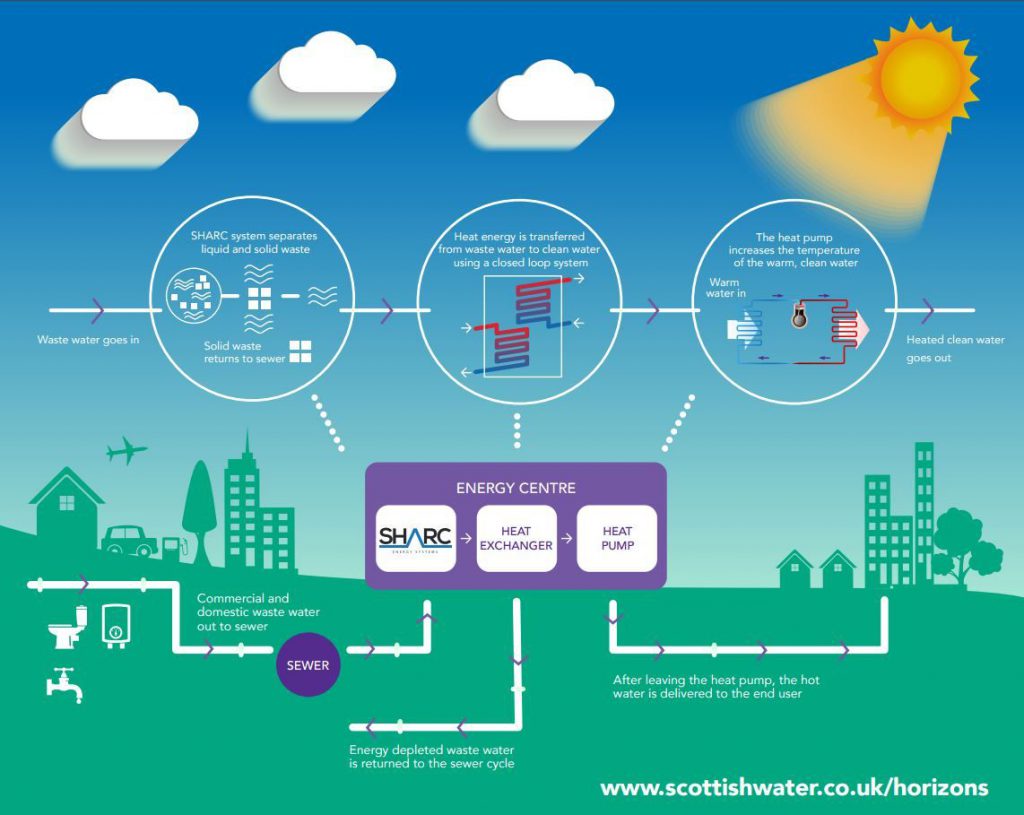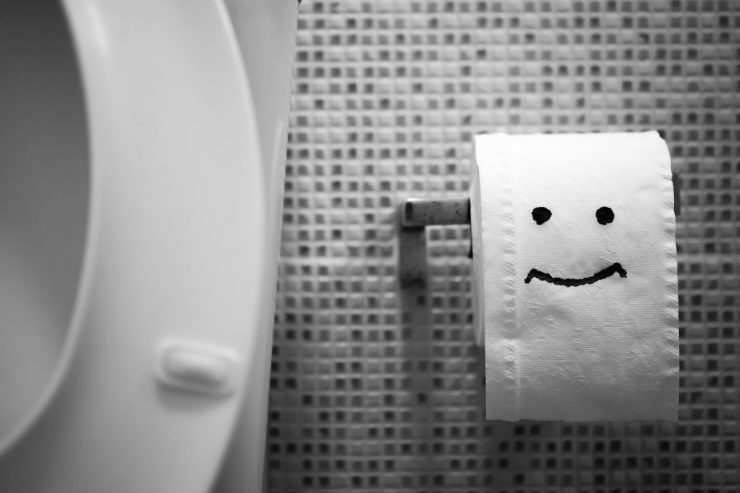In the search for new and sustainable energy sources, few people realise that there is an energy source flowing beneath the surface of our cities. Sewage!
This abundant, free energy source remains mostly untapped. However, there are companies looking to harness sewage to reduce the amount of heat lost to the environment.
Borders College is the first project in the UK that harnesses waste water that goes down sinks, showers and toilets. They recycle it to make use of the heat that would otherwise be lost.
The college gets 95% of its heating from the nearby sewer water on its way to a waste treatment factory.
The makers of the Borders College system state that around 30% of all energy in the world ends up in the sewer!
HOW DOES IT WORK?
When we flush our toilets, or drain our showers and baths, there is heat in the water that is carried away. It is not a very high temperature, but by using a heat pump, the temperature can be raised to a level that can be used to heat (or cool) buildings and water. This is known as a heat recovery system.

(Click to open full-size image)
The SHARC system used at Border’s College, separate the liquid and solid waste that are on their way to waste treatment plants. The liquid then goes to a heat exchanger which transfers the heat to the water in the heating system (without mixing it with the sewage water). A heat pump then raises the temperature of the water high enough to use in homes and business. Then the now cooler sewage water goes to the treatment plant.
By lowering the amount of waste heat going into the environment we can save money, improve the air quality and make our heating more sustainable.
WASTE HEAT
More than 50% of all energy produced by humanity is lost as heat. This happens everywhere, from large power stations and industrial sites to people’s homes and cars.
This heat lost to the environment only has a small direct impact on the environment (about 1% of global warming). If we could capture and use this wasted energy it would greatly reduce the amount of energy we need to generate and in turn lower the amount of CO2 released into the atmosphere.
There are many potential sources to harvest waste heat from:
- Crematoriums in the UK and Sweden have been used to heat swimming pools.
- Heat from the underground in parts of London is used to heat local homes.
- Data centres run by large tech companies, one data centre in Denmark can heat up to 7000 homes.
The biggest challenge to increasing efficiency and using as much waste heat as possible is that a lot of the places that produce large amounts of waste heat (like power stations and ironworks) are built far away from where the heat could be used. Heat can’t be transported very far. A possible solution is to use the waste heat to make electricity which is much easier to transport and could be used for anything we want.
This would save people money and mean a lot less CO2 being released.
How do you feel about using waste heat this way? Answer our poll below and see if you’re of the same opinion as others!
[interaction id=”58357f7c67075ce64999ba37″]











